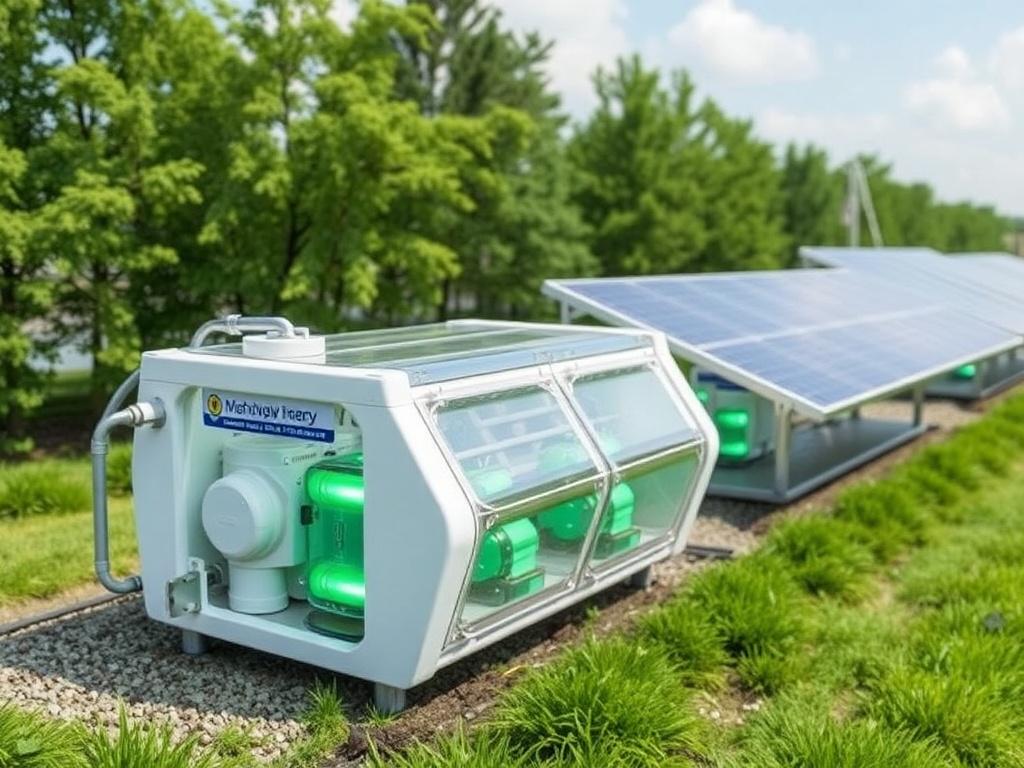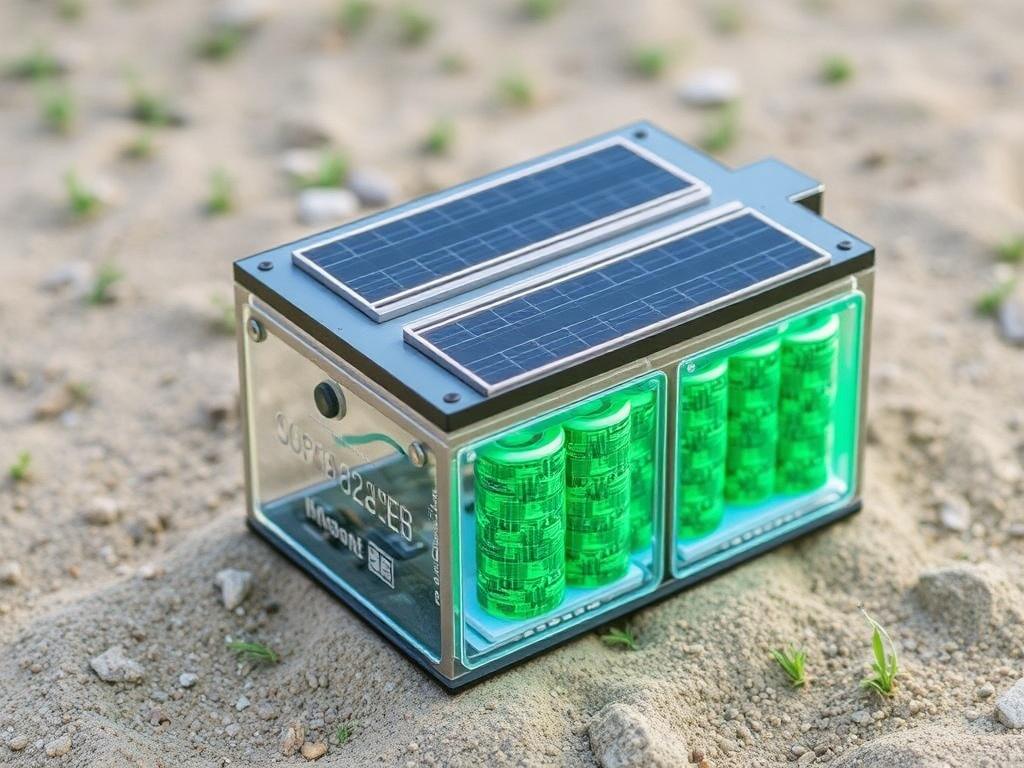- What Are Flow Batteries and How Do They Work?
- Key Components of a Flow Battery
- The Advantages of Flow Batteries in Renewable Energy Storage
- Scalability and Customizability
- Longer Lifespan and Durability
- Safety and Environmental Benefits
- Cost Considerations
- Types of Flow Batteries and Their Applications
- Vanadium Redox Flow Batteries
- Zinc-Bromine Flow Batteries
- Organic and Aqueous Flow Batteries
- Other Emerging Chemistries
- How Flow Batteries Enhance Renewable Energy Integration
- Stabilizing Grid Supply
- Facilitating Long-Duration Storage
- Supporting Microgrids and Remote Locations
- Reducing Renewable Curtailment
- Challenges and Limitations Facing Flow Battery Adoption
- High Initial Capital Cost
- Energy Density Constraints
- System Complexity
- Limited Market Experience
- The Future Outlook: Flow Batteries and Renewables Going Forward
- Key Players and Projects Making Waves
- How Consumers Benefit
- Comparing Storage Technologies
- Conclusion
The world is witnessing an energy revolution, one where renewable sources like solar and wind are becoming dominant players in global electricity generation. However, the intermittent nature of these energy sources presents a significant challenge: how do we store energy effectively so it can be used when the sun isn’t shining or the wind isn’t blowing? Enter the innovative solution known as flow batteries. These advanced energy storage systems are gaining traction as a game-changer for renewable energy integration, offering scalability, longevity, and environmental benefits that traditional batteries struggle to match. In this article, we’ll explore the rise of flow batteries for renewable energy in depth—breaking down their technology, advantages, challenges, and how they are shaping a sustainable future for the planet.
What Are Flow Batteries and How Do They Work?
Flow batteries, sometimes called redox flow batteries, represent a unique category of rechargeable energy storage devices. Unlike conventional batteries, which store energy within the electrodes themselves, flow batteries store energy externally in liquid electrolytes held in large tanks. These electrolytes contain dissolved electroactive materials that interact at electrodes housed inside a reactor cell. When the battery charges or discharges, these fluids flow through the cell, facilitating a controlled electrochemical reaction that converts chemical energy to electrical energy, or vice versa.
Because the energy storage capacity of a flow battery depends largely on the volume of electrolyte solution contained in the tanks, it offers unparalleled scalability. This makes flow batteries particularly attractive for grid-scale energy storage, where flexibility and capacity are crucial. Moreover, flow batteries can be “recharged” by simply replacing or rebalancing the electrolyte fluids, which greatly extends their operational lifespan compared to conventional lithium-ion batteries.
Key Components of a Flow Battery
To understand the promise behind flow batteries for renewable energy, it helps to know their basic components and how they fit together:
| Component | Description | Role in Energy Storage |
|---|---|---|
| Electrolyte Tanks | Two separate reservoirs holding liquid electrolytes (positive and negative) | Stores the chemical energy and supplies electrolyte fluids to the cell |
| Reactor Cell | Contains electrodes separated by a membrane | Site of the electrochemical reactions converting energy |
| Electrodes | Conductive materials (like carbon) where oxidation and reduction occur | Facilitates electron flow during charging and discharging |
| Membrane/Separator | Permits ion exchange but prevents electrolyte mixing | Maintains chemical separation to sustain battery operation |
| Pump System | Circulates the electrolytes between tanks and reactor | Ensures continuous flow and energy conversion |
The Advantages of Flow Batteries in Renewable Energy Storage
Renewable energy systems require storage technologies that can offer reliability, longevity, and cost-effectiveness. Conventional battery types like lithium-ion have dominated the market but come with limitations such as thermal sensitivity, limited cycle life, and resource constraints. Flow batteries address many of these challenges, making them an increasingly attractive choice.
Scalability and Customizability
One of the standout advantages of flow batteries is their scalability. Because the energy capacity is determined by electrolyte volume rather than battery cell size alone, energy systems can be designed and sized independently for specific needs. Want a larger capacity for longer-duration storage? Simply increase the size of the electrolyte tanks. Need more power output? Expand the stack of cells. This flexibility is especially valuable for integrating renewable energy sources where energy demands vary widely.
Longer Lifespan and Durability
Flow batteries boast significantly longer cycle life compared to their lithium-ion counterparts. Many flow battery chemistries can endure tens of thousands of charge and discharge cycles without substantial degradation. This endurance is largely attributed to the separation of energy storage (electrolytess) and power generation (electrodes and cells), reducing wear and tear. Longevity means less frequent replacements, reducing long-term costs and environmental waste.
Safety and Environmental Benefits
Unlike lithium-ion batteries, flow batteries operate at ambient temperatures and use non-flammable electrolytes, reducing the risk of thermal runaway and fires. Additionally, many flow battery chemistries use abundant, non-toxic materials like vanadium or organic compounds, improving sustainability. This aligns directly with the goals of renewable energy projects to minimize their ecological footprint.
Cost Considerations
Historically, flow batteries have had higher upfront costs compared to lithium-ion systems due to their complexity and materials costs. However, when evaluated from a lifecycle perspective considering longevity, scalability, and lower maintenance, they increasingly become cost-competitive solutions for large-scale energy storage. Ongoing technological advances continue to drive costs down, making the rise of flow batteries for renewable energy storage more financially feasible.
Types of Flow Batteries and Their Applications
Flow batteries are not a one-size-fits-all technology. Several types exist, each with unique chemistries and characteristics that suit different renewable energy storage applications.
Vanadium Redox Flow Batteries
The most widely commercialized flow battery technology is based on vanadium redox chemistry. Both tanks contain vanadium ions but in different oxidation states, allowing the same element to be used for both sides of the battery. This simplifies electrolyte management and recycling. Vanadium redox flow batteries (VRFBs) are known for long cycle life, stability, and relatively mature manufacturing. They are ideal for long-duration energy storage in renewable energy farms, microgrids, and industrial-scale applications.
Zinc-Bromine Flow Batteries
Zinc-bromine batteries utilize a zinc metal negative electrode and bromine-positive electrolyte. They offer high energy density and reasonable cost but require careful management to prevent corrosion and bromine leakage. Zinc-bromine flow batteries suit applications needing medium-duration storage with flexible deployment options.
Organic and Aqueous Flow Batteries
Emerging research focuses on using organic molecules or abundant aqueous electrolytes to create more environmentally friendly and cost-effective flow batteries. These systems can potentially use inexpensive, non-toxic materials derived from biomass or other sustainable sources. Although still largely in the experimental or early commercialization stage, organic flow batteries promise to expand the possibilities for renewable energy storage with low environmental impact.
Other Emerging Chemistries
Other promising chemistries include iron-chromium, polysulfide-bromide, and hybrid systems. Each offers unique benefits that could be matched to specific renewable energy storage challenges, such as grid balancing, peak shaving, and off-grid power supply.
How Flow Batteries Enhance Renewable Energy Integration

The rise of flow batteries for renewable energy comes at a crucial time as grids worldwide become increasingly reliant on variable renewable sources. Let’s break down how flow batteries specifically contribute to addressing integration challenges.
Stabilizing Grid Supply
Renewable energy generation often fluctuates unpredictably due to weather variability. Flow batteries provide a buffer by storing excess energy during peak generation times and releasing it during periods of low production. This smoothing effect helps stabilize the grid’s voltage and frequency, improving reliability for consumers.
Facilitating Long-Duration Storage
Unlike conventional batteries optimized for short bursts, many renewable applications require storing energy for hours or even days. Flow batteries’ scalable electrolyte tanks enable large energy capacities and extended discharge durations, making them well-suited for time-shifting renewable energy weeks or hours ahead.
Supporting Microgrids and Remote Locations
Flow batteries can be configured to support microgrid installations and off-grid renewable power systems. Their longer lifespan and ease of electrolyte replacement reduce maintenance requirements in remote areas where service visits might be challenging. This independence supports sustainable development in underserved regions.
Reducing Renewable Curtailment
Electricity curtailment occurs when renewable generation exceeds immediate demand but there is insufficient storage capacity to save the surplus. Flow batteries enable higher renewable utilization by capturing and storing this excess energy that would otherwise go to waste.
Challenges and Limitations Facing Flow Battery Adoption
While flow batteries offer many exciting advantages for renewable energy storage, certain barriers still impact widespread adoption. Understanding these challenges provides a balanced view of the technology’s current stage.
High Initial Capital Cost
The upfront investment for flow battery systems—especially vanadium redox flow batteries—remains relatively high compared to other storage technologies. The cost of vanadium electrolyte and complex balance-of-system components contributes to this. However, long system lifespan and low degradation can offset these costs over time.
Energy Density Constraints
Flow batteries generally have lower energy density than lithium-ion batteries, meaning they require larger physical space per unit of stored energy. For some densely populated or space-limited sites, this poses a challenge.
System Complexity
Flow batteries involve pumps, tanks, and more plumbing than traditional batteries, increasing system complexity. This requires specialized maintenance and controls, which may limit adoption in some applications.
Limited Market Experience
Although commercial-scale flow battery projects exist, the technology is still emerging compared to lithium-ion batteries with decades of industry experience. Market confidence and infrastructure for flow batteries need further development.
The Future Outlook: Flow Batteries and Renewables Going Forward
Despite challenges, the rise of flow batteries for renewable energy storage looks promising. Global demand for efficient, long-duration storage is skyrocketing as renewable targets accelerate. Several trends point toward growth in flow battery deployment:
- Technological Innovations: Advances in electrolyte chemistry, membrane materials, and manufacturing processes are improving performance while reducing costs.
- Policy Support: Governments worldwide are promoting grid modernization and energy storage incentives, creating favorable market conditions.
- Hybrid Systems: Flow batteries may be combined with lithium-ion or other storage to optimize cost, power, and duration metrics.
- Decentralized Energy: As microgrids expand, the ease of scaling flow batteries matches decentralized renewable systems well.
Key Players and Projects Making Waves
Various companies and pilot projects exemplify flow batteries’ rise in renewable energy storage. For instance, vanadium flow battery installations in Australia and China showcase grid-scale applications, while zinc-bromine systems are being tested in commercial hubs in the US. Research institutions are actively developing organic flow batteries with the aim of bringing eco-friendly alternatives to market within the next decade.
How Consumers Benefit
For end-users, the rise of flow batteries for renewable energy means greater access to reliable, clean power, fewer blackouts, and potentially lower energy costs in the long run. Businesses can better manage energy loads and grid demands, while communities gain energy independence coupled with environmental responsibility.
Comparing Storage Technologies
To put things in perspective, here’s a table comparing flow batteries to more familiar battery types with respect to renewable energy storage suitability:
| Technology | Energy Density | Cycle Life | Scalability | Safety | Typical Use Case |
|---|---|---|---|---|---|
| Vanadium Redox Flow | Low to Moderate | Very High (10,000 — 20,000 cycles) | Excellent | High (Non-flammable) | Grid-scale, Long-duration |
| Lithium-Ion | High | Moderate (1,000 — 3,000 cycles) | Limited by cell design | Moderate (Flammable risk) | EVs, Short to medium duration storage |
| Zinc-Bromine Flow | Moderate | High (~3,000 cycles) | Good | Moderate | Commercial, Off-grid |
Conclusion
The rise of flow batteries for renewable energy heralds a transformative shift in how we store and utilize clean power. With their unique ability to scale independently, last longer, and operate safely, flow batteries address many of the critical challenges inherent in integrating renewable energy into the grid. While initial costs and system complexity remain hurdles, ongoing innovations and growing market familiarity promise to position flow batteries as a cornerstone technology for a sustainable energy future. As the world pushes toward ambitious renewable targets, flow batteries offer not just a solution for energy storage but a beacon of resilience, flexibility, and environmental stewardship—powering communities, industries, and countries in their quest for a cleaner, greener tomorrow.
Как вам статья?







